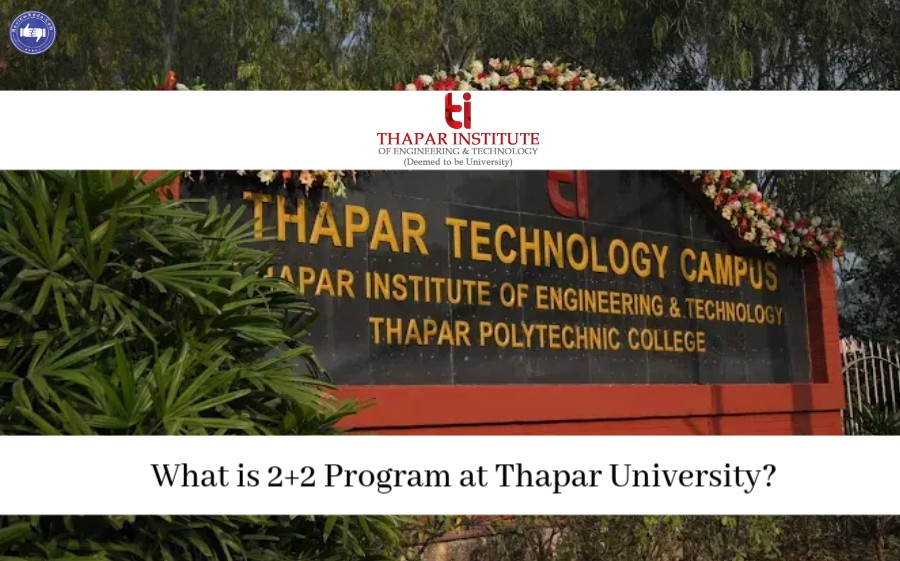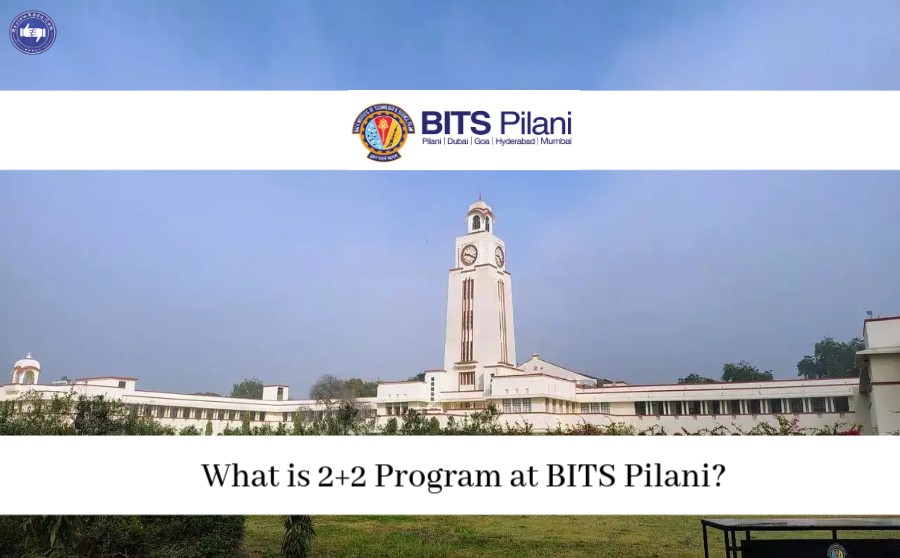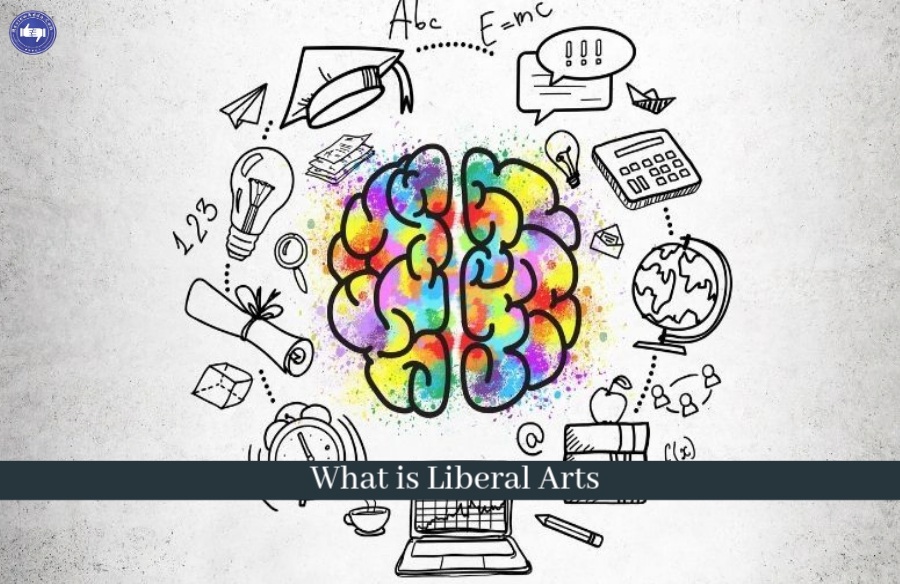Topic We Cover: Nirma University vs DAIICT vs Parul University
1. Why Comparisons?
2. The Factors
- Placements
- Student perception of a given college/university
- Infrastructure
- Student-to-faculty ratio (StF)
- Affordability
3. Nirma University Ahmedabad
- Nirma University Academics
- Nirma University Course Details
- Nirma University Placements
4. Dhirubhai Ambani Institute of Information and Communication Technology, Gandhinagar
- DAIICT Academics
- DAIICT Course Details
- DAIICT Placements
5. Parul University Vadodara
- Parul University Academics
- Parul University Course details
- Parul University Placements
6. Ahmedabad University, Ahmedabad
- Ahmedabad University Academics
- Ahmedabad University Course Details
- Ahmedabad University Placements
7. Ganpat University Mehsana
- Ganpat University Academics
- Ganpat University Course details
- Ganpat University Placements
8. The Comparison
We will now move our college comparison bandwagon to Gujarat, a state blessed with some of the best colleges and universities in the country. Since comparing each prospective university from the state is a near impossible task, we have selected three universities for the comparative analysis.

Nirma, Parul and DAIICT are counted amongst the Best Education Institutions in India
These institutions are Nirma University, DAIICT, Parul University, Ahmedabad University and Ganpat University.
Why Comparisons?
By this point of time, most readers must be wondering, ‘Why comparisons?’
The question is fairly common and the answer happens to be multi-faceted. One major reason is providing the right insight to students for selecting colleges, something they happen to lack. The level of difficult faced by different types of students after their exams is explained in the table below.
|
Type of student |
Difficulty in choosing college |
Choice of colleges/universities |
|
Topper |
Low |
Have their pick of the colleges to choose from and thus end up at the best colleges available |
|
Above Average |
Medium |
Variety of choice is slightly reduced compared to toppers. |
|
Average |
High |
Number of colleges to choose from is many, so task of analyzing colleges becomes all the more difficult |
|
Below Average |
Medium |
Choice restricted to lower tier colleges |
|
Poor |
Low |
Very narrow field to choose from |
The reason average students tend to have the most tedious task on hand is the relative similarity in the colleges they have to choose from. For instance, let us consider engineering as the field in question here. The topper will have no problem in choosing a college as he/she will have the luxury of going to the best institute available. A topper wouldn’t think twice to choose IIT Delhi over JIIT or Amity. The choice is very simple.
Now consider an average student who has to make a choice between Amity and LPU. Which college does he choose now? This dilemma isn’t as straightforward as IIT or Amity. To choose between Amity and LPU requires developing a keen analytical insight while choosing a institute for higher education.
Another reason we are continuing with comparisons is the rise of private colleges and universities. Government run colleges and universities are traditionally considered trustworthy and more importantly, risk-averse. Low fee at government colleges and universities reduces the risk of taking admission significantly. Even if things go bad, the financial loss isn’t as steep.
While choosing private colleges and universities, the stakes are higher than ever. The exorbitant fee elevates the risk to a highly disproportionate level. This is why the choice between two seemingly similar private colleges and universities is much more difficult.
You can check-out some college comparisons we did earlier. Send in your suggestions for any special comparisons you want us to look into.
LPU vs Amity vs CU vs Chitkara
Christ University vs IFIM vs AIM
The Factors
Comparisons done without establishing discernable factors is nothing more than guesswork. When it comes to matters such as college comparisons, it becomes imperative to establish key factors which are vital for choosing colleges.
Some of these factors are almost always considered by students, while some others are only seldom discussed. Nevertheless, each of these factors represents an important parameter which should be considered for a standard evaluation of a college.
The factors are listed below:
- Placements
No prizes for guessing this one.
In the present-day education system of India; every college, university and course is evaluated on the basis of one common binary arithmetic; good placements or bad placements.
The obsession with college placements isn’t entirely unfounded. A developing country like India needs a constant influx of quality engineers entering the workforce every year. It is for this primary reason most students get into engineering in the first place.
Where there is demand, there must be supply.
Most engineers are hired straight out of college, as most companies in the industry consider a four-year B.Tech course as ample training to work in a professional environment. Going by these simple industry trends, one cannot be faulted for obsessing over campus placements.
However, considering campus placements as the only factor comparing colleges is a grave mistake, one which we will not be making.
- Student perception of a given college/university
Many tend to dismiss perception for being a highly superficial factor. To understand the importance of perception when it comes to college comparisons, let us consider a small story.
Abhishek Singh is a student at a top coaching institute in Delhi. Once during a routine class, one of his classmates asked the Physics teacher about a private university ‘ABC’. Note that X is a decent university with a good mix of academics and extra-curricular activities.
The Physics teacher however dismisses ABC out of hand. He believes the students should concentrate on getting admitted to the top government colleges and forget about ABC.
Now the physics teacher doesn’t have a bad perception about ABC. He just wants his students to aim higher and prepare harder. However, his action in turn creates a negative perception amongst the students about ABC, including Abhishek.
Like the physics teacher, almost all other teachers at the coaching institute tell their students to forget about ABC and aim higher. This creates a undercurrent of negative perception about ABC at the coaching institute. Perception, like the plague, spreads like wildfire. The students at the coaching institute will further spread their negative perception about ABC to their friends at school.
And before you know it, ABC becomes the worst university in the world.
Perception is a highly infectious factor, something which cannot be measured or contained. Amongst the five factors we mention here, perception is easily the most difficult to gauge and quantify.
- Infrastructure
Put simply, the quality of infrastructure at a college or university can be evaluated by determining whether a student at the institution has the right tools at his/her disposal to reach the very top, or somewhere near it.
Infrastructure of a college cannot be evaluated based on the presence of fancy buildings and pretty fountains. It needs to be a representation of the presence of the right facilities for maximum optimization.
For e.g. robotics is becoming a highly touted field in engineering. Many even consider it the future of mechanical engineering. To tap into this trend, assume a college ‘XYZ’ introduces a course in robotics. However, it does not simultaneously open a lab to give students a firsthand experience of the functionality of robots. This is what we call a gap in infrastructure. Simply introducing a robotics course is useless unless XYZ backs up its endeavour by opening a lab.
- Student-to-faculty ratio (StF)
Student-to-faculty ratio is often considered a mere detail, but it ends up affecting college life on a much higher level than most students anticipate. Faculties at a college are a very precious resource, and if there aren’t enough of them to handle and educate the students, management and administration of the college becomes a nightmare. While many students tend to ignore StF as a trivial statistic, it should be taken very seriously before taking admission
- Affordability
Affordability is an important factor for aspirants looking for UG or PG admission, especially in the case of private colleges. In most cases, spending money on higher education comes down to risk estimation. If the fee of a college/university is too steep, aspirants tend to avoid that particular institution due to a high risk quotient.
For e.g. if a student was accepted to IIM Bangalore, he/she wouldn’t consider the fee as a risk. However, if a similar fee amount was to be paid at lower tier college, the student would look to consider his/her options.
Nirma University Ahmedabad
Nirma University is a privately administered institution in Ahmedabad. It was established as Nirma Institute of Technology in 1995 by the Nirma Education and Research Foundation (NERF). The foundation was chaired by the chairman of Nirma Group, Dr. Karsanbhai Patel.
Nirma Institute of Technology operated under the purview of Gujarat University at the time, offering five UG programs in engineering. In subsequent years, NERF expanded Nirma Institute of Technology to many other fields of study such as management, law, pharmacy, law, architecture & planning, commerce and design.
In 2003, the institute was accorded ‘university’ status by the state assembly of Gujarat under the UGC act. To comply with UGC norms, Nirma University stopped intake of engineering diploma students in 2013.
Besides being approved by UGC, Nirma University is graded ‘A’ by NAAC. Furthermore, it is also a member of the Association of Indian Universities (AIU).
Nirma University Academics
Like most other colleges and universities in the country, Nirma also offers various courses through its constituent institutes. These institutes are listed below:
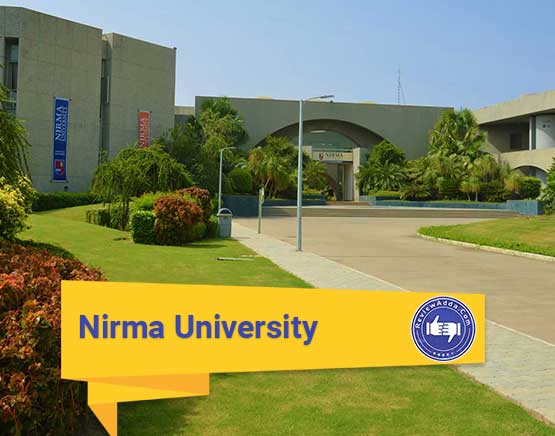
Nirma is well known not just in Gujarat, but amongst a major portion of the Indian student populace
- Institute of Technology
- Bachelor of Technology [B.Tech]
- Master of Technology [M.Tech]
- Master of Computer Applications [MCA]
- Institute of Management
- Bachelor Of Business Administration + Master of Business Administration [BBA + MBA]
- Master of Business Administration [MBA]
- Institute of Law
- Bachelor of Arts + Bachelor of Law [BA + LLB]
- Bachelor of Commerce + Bachelor of Law [B.Com + LLB]
- Master of Law [LLM]
- Institute of Architecture And Planning
- Bachelor of Architecture [B.Arch ]
- Bachelor of Planning [B.Plan]
- Institute of Pharmacy
- Bachelor of Pharmacy [B.Pharm]
- Master of Pharmacy [M.Pharm]
- Institute of Science
- Master of Science [M.Sc]
- Institute of Commerce
- Bachelor of Commerce [B.Com]
Nirma University Course details
Given below are the details of the various Nirma University courses. These details namely include the duration and fee of the given course.
|
Course |
Duration |
Fee per annum (INR) |
|
Bachelor of Technology (B.Tech) |
4 |
1,57,725/- |
|
Bachelor of Architecture (B.Arch) |
5 |
1,68,380/- |
|
Bachelor of Planning (B.Plan) |
4 |
1,06,725/- |
|
Bachelor of Design (B. Des) |
3 |
2,67,467/- |
|
Bachelor of Business Administration + Master of Business Administration (BBA + MBA) |
5 |
3,40,200/- |
|
Bachelor of Commerce (B.Com) |
3 |
1,45,000/- |
|
Master of Technology (M.Tech) |
2 |
1,23,135 /- |
|
Bachelor Of Pharmacy (B.Pharm) |
4 |
2,25,625/- |
|
Master of Business Administration (MBA) |
2 |
5,46,000/- |
|
Master of Science (M.Sc) |
2 |
1,25,000/- |
|
Master of Computer Applications (MCA) |
3 |
1,56,333/- |
|
Master of Pharmacy (M.Pharm) |
2 |
3,42,250/- |
Nirma University Placements
Nirma University is fairly decent as far as placements are concerned. The highlights of Nirma University placement statistics over the last three years has been tabulated below. The data is only for B.Tech students.
|
Year |
Number of students eligible |
Number of students placed |
Median salary package (INR) |
|
2016 |
668 |
445 |
3.25 LPA |
|
2017 |
644 |
433 |
3.30 LPA |
|
2018* |
709 |
479 |
3.3 LPA |
*until Mar 2018
Dhirubhai Ambani Institute of Information and Communication Technology, Gandhinagar
Established in 2001, DAIICT Gandhinagar was established with the aim of ushering the digital revolution. Named after one of India’s greatest business tycoon Dhirubhai Ambani, the institution is promoted and administered by the Anil Dhirubhai Ambani Group (ADAG).
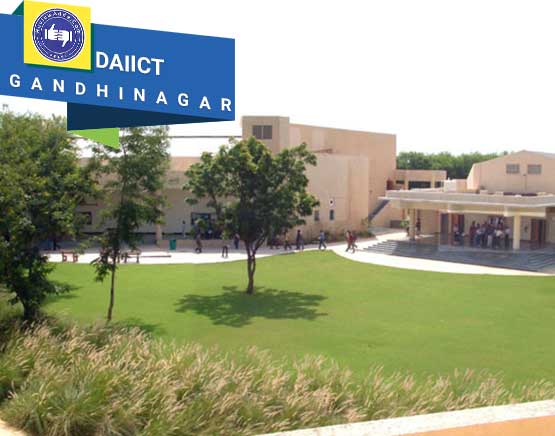
DAIICT Gandhinagar is quite comfortably the best private college for engineering in Gujarat
DAIICT admissions are done through performance of aspirants in JEE-Mains alone. No other exam score is required for admission. In 2003, DAIICT was recognized as a ‘university’ by the Gujarat State Assembly under the UGC act. The institution is also a member of the Association of Indian Universities (AIU).
DAIICT Academics
Unlike most other colleges and universities in the country, DAIICT does not have any special constituent schools or departments. The courses offered have their sub-departments, but there are no overarching departments for each field.
DAIICT Course Details
Besides the doctorate program, DAIICT offers four regular programs and one honours program. The course details of these programs have been listed below:
|
Course |
Duration |
Fee per annum (INR) |
|
Bachelor of Technology (B.Tech) |
4 |
1,57,550/- |
|
Master of Design (M. Des) |
2 |
1,57,550/- |
|
Master of Technology (M.Tech) |
2 |
1,13,500/- |
|
Master of Science (M.Sc) |
2 |
1,52,500/- |
|
Bachelor of Technology Honours (B.Tech Honours in Computational Science) |
4 |
1,57,550/- |
|
Doctorate (PhD) |
3 (min) |
40,000/- |
DAIICT Placements
DAIICT placements aren’t as high profile as many would otherwise expect, owing to its high rank in most engineering college listings. A key reason is a major portion of students choose to study further after graduation. Due to this, the relative number of students sitting for placements at DAIICT is reduced significantly.
The table below presents a summary of placements at DAIICT this year.
|
Type of Data |
Data |
|
Student Intake |
300 |
|
Number of student recruited |
140 |
|
Median Salary For UG Students (INR) |
7.0 LPA |
|
Median Salary For PG Students (INR) |
5.0 LPA |
Parul University Vadodara
Parul University was established just a few years back by Parul Arogya Seva Mandal Trust to further accelerate the flow of skilled engineers in India. In a short span of time, it has managed to gain the trust of a number of students. The University has the largest student intake in West India, something which is unique for an institution as young.

Parul University is new entrant on the education scene in Gujarat
The institute has a long list of accreditations, which is natural as it has a large number of courses. Parul University is approved and accredited by UGC & AICTE, and graded ‘B’ by NAAC. Furthermore, it is also a member of the Association of Indian Universities (AIU).
Parul University B.Tech admissions are conducted through JEE Mains score of the given aspirant.
 Get Updated Review ( Voice Based Alumni Feeback)
Get Updated Review ( Voice Based Alumni Feeback)
-
 Check Review (Alumni Feedback) - Lovely Professional University - [LPU] – Click Here
Check Review (Alumni Feedback) - Lovely Professional University - [LPU] – Click Here -
 Check Review (Alumni Feedback) - Amity University – Click Here
Check Review (Alumni Feedback) - Amity University – Click Here -
 Check Review (Alumni Feedback) - DIT University Dehradoon – Click Here
Check Review (Alumni Feedback) - DIT University Dehradoon – Click Here -
 Check Review (Alumni Feedback) - Chitkara University – Click Here
Check Review (Alumni Feedback) - Chitkara University – Click Here -
 Check Review (Alumni Feedback) - Ansal University – Click Here
Check Review (Alumni Feedback) - Ansal University – Click Here
Parul University Academics
Like DAIICT, Parul University does not have any given constituent schools which handle different courses independently.
Parul University Course details
Parul University courses tally up to over 35, excluding the diploma courses offered. The course details, namely the duration and course fee are tabled below:
|
Course |
Duration |
Fee per annum (INR) |
|
Bachelor of Technology (B.Tech) |
4 |
90,000/- |
|
Bachelor of Architecture (B.Arch) |
5 |
90,000/- |
|
Bachelor of Planning (B.Plan) |
4 |
60,000/- |
|
Bachelor of Design (B. Des) |
4 |
2,00,000/- |
|
Bachelor of Business Administration (BBA) |
3 |
40,000/- |
|
Bachelor of Computer Applications (BCA) |
3 |
40,000/- |
|
Master of Technology (M.Tech) |
2 |
95,000/- |
|
Bachelor Of Pharmacy (B.Pharm) |
2 |
45,000/- |
|
Master of Business Administration (MBA) |
2 |
65,000/- |
|
Master of Science (M.Sc) |
2 |
60,000/- |
|
Master of Computer Applications (MCA) |
3 |
74,000/- |
|
Bachelor of Commerce (B.Com) |
3 |
30,000/- |
Parul University Placements
Since the university was established just a few years ago in 2015, the placement statistics are not available yet.
Ahmedabad University, Ahmedabad
Ahmedabad University was established in 2009 as a private non profit institution. It has since gone on to create a very reliable name around its brand name, offering courses across highly popular fields such as engineering and management.
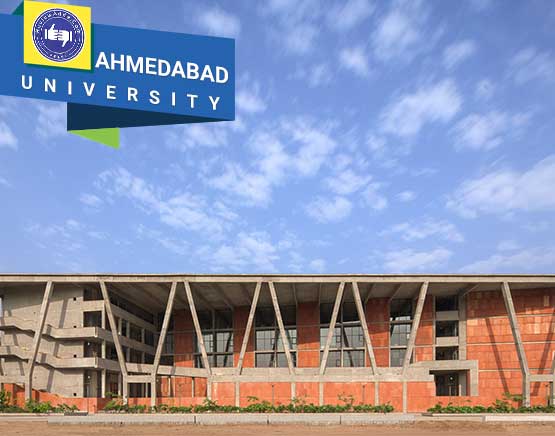
Engineering and management are the most popular fields at Ahmedabad University
A key part of education dispersion at the university is keeping a key focus on research and interdisciplinary learning. It was instituted by the Ahmedabad Education Society for the purpose of accelerating the growth of technical and management education in the state.
Ahmedabad University is accredited and recognized by NAAC and UGC respectively.
Ahmedabad University Academics
Ahmedabad University offers its course through its constituent schools. They have been listed below.
- Amrut Mody School of Management
- School of Computer Studies
- School of Engineering and Applied Sciences
- School of Art and Sciences
Ahmedabad University Course details
Ahmedabad University’s course details have been listed in the table below. The details namely include course fee and duration.
|
Course |
Duration |
Fee per annum (INR) |
|
Bachelor of Technology (B.Tech) |
4 |
1,07,500/- |
|
Bachelor of Business Administration (BBA) |
3 |
91,000/- |
|
Bachelor of Computer Applications + Master of Computer Application (BCA + MCA) |
5 |
1,25,600/- |
|
Master of Technology (M.Tech) |
2 |
1,35,000/- |
|
Master of Business Administration (MBA) |
2 |
1,29,250/- |
|
Master of Computer Applications (MCA) |
3 |
95,000/- |
|
Bachelor of Commerce (B.Com) |
3 |
61,000/- |
Ahmedabad University Placements
B.Tech placements at Ahmedabad University have been above average, considering its performance in the past few years. The overall highlights of the placement program are given below:
|
Type of Data |
Data |
|
Number of companies visiting campus |
74 |
|
Percentage of students placed |
86% |
|
Average CTC |
INR 4.86 LPA |
|
Maximum CTC |
INR 15.5 LPA |
Ganpat University Mehsana
Ganpat University stands amongst the most renowned and respected institutions in Gujarat. Established as a state private university in 2005, Ganpat University has grown leaps and bounds. With a sprawling campus spread across 300 acres providing education to over 10,000 students, Ganpat University always remains a decent option for students residing in Gujarat for higher education.
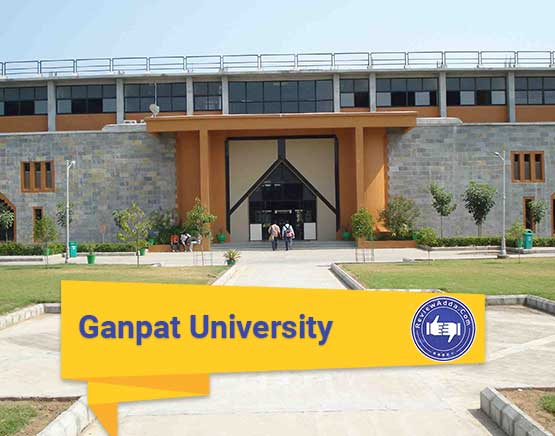
Ganpat University is known to be a dependable institution for UG education
The University is approved by the UGC and accredited by AICTE. Courses are offered at the Mehsana campus across wide ranging fields such as Engineering & Technology, Pharmacy, Management, Computer Applications, Sciences, Education, Humanities & Social Science, and Human Potential Development.
Admissions to UG engineering exams are offered through performance in standard entrance exams such as JEE Mains and GUJCET. M.Tech admissions are done through GATE and architecture students have to apply through their respective NATA score.
MBA admissions are also done through gauging performance in standard entrance exams such as CAT, MAT, XAT and CMAT.
Ganpat University Academics
The academic discourse at Ganpat University is divided into various departments. Each department handles the students under its own purview. These departments are mentioned below:
- Faculty of Engineering and Technology
- Faculty of Pharmacy
- Faculty of Management Studies
- Faculty of Computer Applications
- Faculty of Social Sciences and Humanities
- Faculty of Architecture, Design and Planning
Ganpat University Course details
Ganpat University course details have been tabulated in the table below. These details include the duration and fees of the respective courses:
|
Course |
Duration |
Fee per annum (INR) |
|
Bachelor of Technology (B.Tech) |
4 |
97,000/- |
|
Bachelor of Business Administration (BBA) |
3 |
35,000/- |
|
Bachelor of Computer Applications (BCA) |
3 |
25,000/- |
|
Master of Technology (M.Tech) |
2 |
1,00,000/- |
|
Master of Business Administration (MBA) |
2 |
81,000/- |
|
Master of Computer Applications (MCA) |
3 |
80,000/- |
|
Bachelor of Commerce (B.Com) |
3 |
17,000/- |
|
Bachelor of Design (B.Des) |
4 |
1,50,000/- |
Ganpat University Placements
Placements at Ganpat University are not as robust as what others might expect. A few highlights of its placement performance in 2016 is tabled below:
|
Type of Data |
Data |
|
Number of students eligible for placements |
537 |
|
Number of students placed |
110 |
|
Average CTC |
INR 2.07 LPA |
|
Highest CTC |
INR 3.36 LPA |
|
Percentage of students placed |
20.48% |
The Comparison
After completing the tumultuous task of discussing key details about each university and college we planned to compared, we finally move on to the comparison.
|
Factors |
Nirma University |
DAIICT |
Parul University |
Ganpat University |
Ahmedabad University |
|
Placements (out of 10) |
8.6 |
9.0 |
- |
7.8 |
8.8 |
|
Perception (out of 10) |
8.9 |
9.1 |
8.5 |
8.4 |
8.7 |
|
Infrastructure(out of 10) |
8.8 |
8.9 |
8.4 |
8.4 |
8.6 |
|
Student-to-faculty ratio (out of 10) |
8.9 |
9.0 |
8.5 |
8.3 |
8.6 |
|
Affordability (out of 10) |
8.2 |
8.2 |
8.9 |
8.8 |
8.7 |



